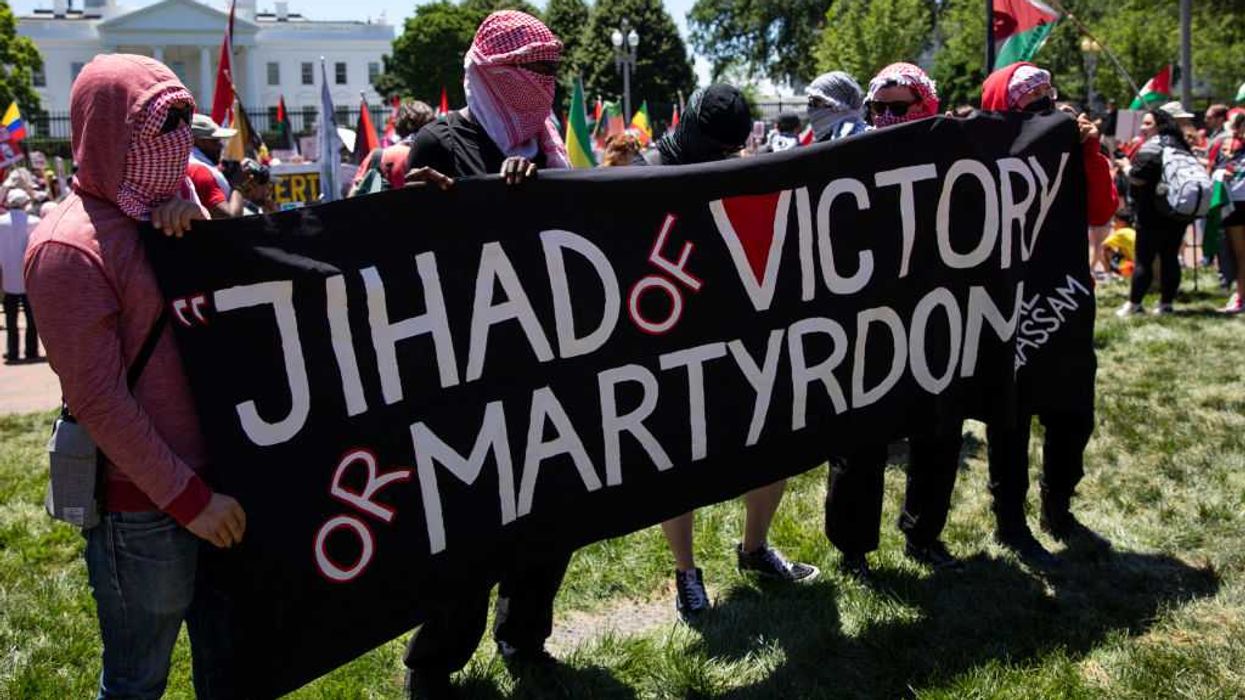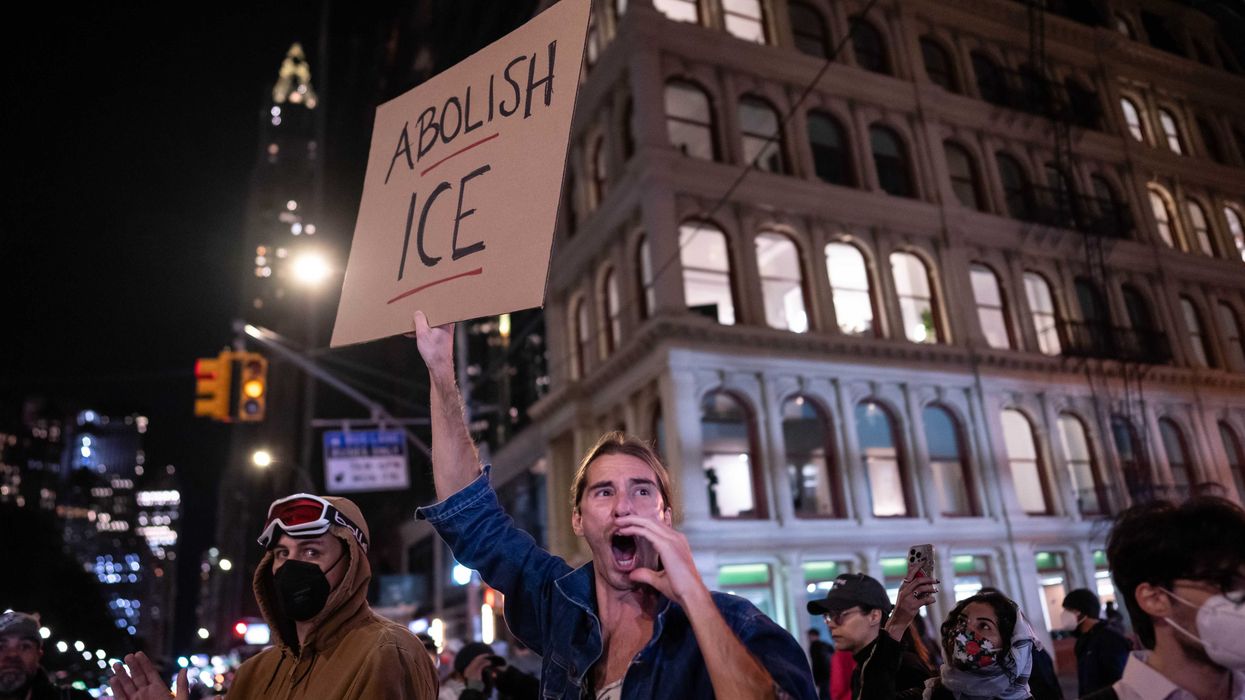President Obama came into office promising a new era of American foreign policy in the Middle East. He said he’d restore America’s standing in the world, but after 6 years has he made any progress? Or is he repeating the exact same mistakes America has made in the past by enabling the enemy of our enemy?
TheBlaze's Jason Buttrill and Dan Andros explain:
Dan: Hey, Dan Andros, head writer here at TheBlaze again with you with Jason Buttrill. He’s chief researcher here, and he’s also former military intelligence. We’re going through all of the foreign policy blunders that this administration and previous administrations have made in the Middle East, particularly in Iraq and Syria with ISIS. When we last picked it up, it was our mistakes that led to helping and aiding the creation of ISIS, which they later migrated into Syria and then invaded back into Iraq.
Now America is presented with a choice: We can either help the Kurds, who are the good guys, or we can once again make the same mistakes we make over and over again. So, what do we choose?
Jason: If you ask Obama what our strategy is, he’ll tell you like he told the rest of the country. He said the Pentagon hadn’t given him a strategy yet. He basically said there is no strategy. We’re spending billions and billions of dollars on airstrikes and training. That’s got to be part of a strategy. If not, we’re just wasting a ton of money.
The real thing is that Obama doesn’t want you to know what the strategy is because we’re making the same mistakes that we’ve always made. His strategy is the enemy of our enemy is our friend. Wrong. We should not be playing that game. If that’s his strategy, which that is the strategy where we’ve basically laid that out, that is their strategy, he should just own up to it and say that’s our strategy, instead of trying to mislead the public into something else.
The current airstrikes are part of an operation called Inherent Resolve. Inherent Resolve is doing airstrikes in both Syria and Iraq. Now, if you look at those airstrikes, there’s a three to one ratio. Most of the airstrikes are happening in towns in Iraq versus in Syria. Well, the capital of the caliphate is in Syria, in Raqqah. Most of their supply lines run from Syria into Iraq. Now, why aren’t we bombing all those supply lines? Why are we not shocking and awing Raqqah?
Dan: Right. That’d be cutting out the heart.
Jason: Exactly. That’s what we did in the first Iraq war, and we were able to bring the Iraqi army to their knees by doing that strategy. It’s the same people. Why don’t we do the same strategy? Let’s do it again. It’ll work. We’re not doing that.
Dan: So, why aren’t we? What are they doing?
Jason: The French Foreign Minister said not too long ago, he kind of let it slip. He said that we cannot have a stable Iraq without a political transition first in Syria. I think that was a huge mistake, and I think that shows what they’re trying to do. Now, they’re not destroying those supply lines. They’re leaving those supply lines from Syria to Iraq open that ISIS is using. I think they’re leaving those open and with more airstrikes in Iraq because they’re trying to push ISIS back into Syria. Again, the enemy of my enemy is our friend. They want ISIS not to attack the Iraqi government which still is making screw-ups over there. They want them attacking someone that everyone can agree is an enemy, Assad in Syria. That’s what they want.
Dan: But that’s not what they want to do. That’s not what the bad guys want to do. They’re going back from where they came from.
Jason: First of all, who are these Iraqi units they we’re providing airstrikes for? It’s not American troops. It’s very rarely the Kurds, although sometimes it is the Kurds in the north, and they’ve made gains off of that, admittedly, but it’s usually in support of Iraqi Shia militias that are backed by Iran. They’re called the PMU, and these guys, the Kurds have a name for them. They called them the Shiite Islamic State because they are just as bad as ISIS.
We are providing close air support for them. It’s true. We’re providing close air support for them. These are the same militias that were killing our troops back in the Iraq war, the exact same guys.
Dan: And now we’re helping them.
Jason: Now we’re helping them. Some of their big personalities, there’s one called Abu Azrael. That translates into the Angel of Death.
Dan: Follow him on Facebook. It’s quite an entertaining follow.
Jason: At TheBlaze, we call him the king of selfies because that’s basically all he’s good for. You’ll see him holding an ax and an M4 but never really shooting it actually at anybody. Abu Azrael brags on social media, and he brags on YouTube. There’s video of him doing this, saying that they got training in both Lebanon and Iran. The head of the PMU, he was just photographed with the President Rouhani in Iran and the Prime Minister of Iraq. They’re not even trying to hide it.
These are the guys that they are now in bed with, and we’re enabling that. It makes no sense. Just last month we announced at a new airbase, the Taqaddum Airbase, we were adding in another 450 advisors to continue to train these tribes. Well, it’s funny because a couple of months ago, another base that we already do this at, they reported that they hadn’t had one new recruit in months, up to six months, not one new recruit.
So, who are we training? It’s a big PR stunt. We sent in 450 advisors, our own boys, our own men, to go in there as a big PR stunt. We’re putting them in a base that Iranian backed Shia militias also bunk at. These are the guys that were killing us a decade ago, and now they’re sharing the same base. Their barracks are across from each other.
In light of all this, now that we know all this, we have to transition from enabling the enemy to propping up people that actually makes sense. Talk about the tragedy of the Kurds, the Kurdish people have been gassed, bombed, brought to the brink of genocide for as long as I can remember. Now they’re denying all of that. Bring us all of the people that have been run out of their homes and villages by ISIS. We’ll take them all in. We’ll not only shelter them, clothe them, and feed them, but we’ll protect them with our own soldiers. They don’t care if they’re Sunni, they’re Shia, they’re Christian. They don’t care what they are. They don’t care what tribe they come from, if their Arab, Kurd, whatever. They’re just taking them all in because they believe all lives matter.
Now, why aren’t we arming them to the teeth? Why are we not training them? Why is not all of our money going to these people? They’ve earned it.
Dan: It especially makes no sense when you realize we’ve got a great option there. We can support the Kurds, the guys who are doing the right thing, share the same values that we share as Americans, but once again, we are making the same mistake we’ve made throughout history, and we’re enabling our enemy by making the enemy of our enemy our friend—same foreign policy mistakes, different year.

 AASHISH KIPHAYET / Contributor | Getty Images
AASHISH KIPHAYET / Contributor | Getty Images
 Harold M. Lambert / Contributor | Getty Images
Harold M. Lambert / Contributor | Getty Images Adam Gray / Stringer | Getty Images
Adam Gray / Stringer | Getty Images Anadolu / Contributor | Getty Images
Anadolu / Contributor | Getty Images